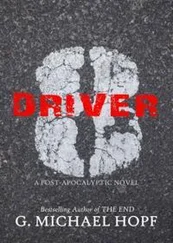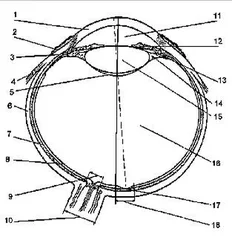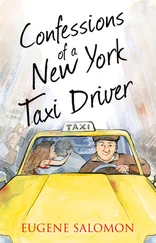State of New Jersey Motor Vehicle Commission - Driver Manual
Здесь есть возможность читать онлайн «State of New Jersey Motor Vehicle Commission - Driver Manual» весь текст электронной книги совершенно бесплатно (целиком полную версию без сокращений). В некоторых случаях можно слушать аудио, скачать через торрент в формате fb2 и присутствует краткое содержание. Жанр: sci_state, Юриспруденция, sci_transport, на английском языке. Описание произведения, (предисловие) а так же отзывы посетителей доступны на портале библиотеки ЛибКат.
- Название:Driver Manual
- Автор:
- Жанр:
- Год:неизвестен
- ISBN:нет данных
- Рейтинг книги:4 / 5. Голосов: 1
-
Избранное:Добавить в избранное
- Отзывы:
-
Ваша оценка:
- 80
- 1
- 2
- 3
- 4
- 5
Driver Manual: краткое содержание, описание и аннотация
Предлагаем к чтению аннотацию, описание, краткое содержание или предисловие (зависит от того, что написал сам автор книги «Driver Manual»). Если вы не нашли необходимую информацию о книге — напишите в комментариях, мы постараемся отыскать её.
Driver Manual — читать онлайн бесплатно полную книгу (весь текст) целиком
Ниже представлен текст книги, разбитый по страницам. Система сохранения места последней прочитанной страницы, позволяет с удобством читать онлайн бесплатно книгу «Driver Manual», без необходимости каждый раз заново искать на чём Вы остановились. Поставьте закладку, и сможете в любой момент перейти на страницу, на которой закончили чтение.
Интервал:
Закладка:
A motorist should always use caution when driving alongside trucks. Sharing the road with larger vehicles can be safe if a motorist knows the limitations of these vehicles regarding visibility, required stopping distance and maneuverability. When passing a large truck or bus, it is important to remember that there are several no-zones (blind spots) in which the motorist cannot see other vehicles. In addition, during bad weather, a truck can take as much as 25 percent longer to stop.
No-zone principle
Avoid the area around trucks where vehicles disappear into blind spots. Do not move so close to a truck that the truck driver’s ability to stop or maneuver effectively is restricted. The potential for a collision is increased when a motorist is riding in the no-zone. If the motorist of a large truck or bus cannot see another motorist’s vehicle in the rearview or side-view mirrors, the vehicle is in a no-zone, or blind spot.
No zones: front 10-20feets/left and right no zones/rear 200 feets
Rear No-Zones
* Stay far behind a truck that is preparing to back up or is backing up. Never pass close behind a truck that is preparing to back up or is in the process of backing up. Because of their width, the trailers completely hide objects that suddenly come between them and a loading area. The area behind the truck is a no-zone (blind spot), not only for the truck driver but for other motorists as well.
* A motorist should increase following distance behind a truck or other large vehicle so its driver can spot a motorist’s vehicle in the rearview mirrors. Never tailgate or remain sandwiched between trucks. A motorist should maintain a sizable space cushion between his/her vehicle and larger vehicles.
* Leave space when stopping at a light or sign behind a truck or bus, especially when facing uphill. The larger vehicle may roll backward slightly when starting.
* Give more road space to a truck driver who is making a wide turn. Because trucks are larger than other vehicles, their drivers may have to slow, back up or swing wide to negotiate a turn. They cannot see smaller vehicles directly behind or beside them. For example, a truck driver may have to swing wide to the left to make a right turn.
Front No-Zones
* Maintain a consistent speed when passing. Do not pull in front of a truck when passing until the whole front of the truck can be seen in the rearview mirror. Always signal before changing lanes. Never pass a truck on the right.
Side No-Zones
* Drive away from the long blind spots on the sides of trucks. If the motorist must quickly change lanes or make an emergency maneuver, a vehicle in this area will be in the way. Do not linger alongside a truck when passing.
Head-On No-Zones
* A motorist should bear right when a large vehicle is traveling toward his/her vehicle from the opposite direction. This reduces wind turbulence between the motorist and the larger vehicle, and possibly prevents a sideswipe.
Yielding to school and commercial buses
State law requires all non-emergency vehicles to yield the right-of-way to buses re-entering traffic after dropping off or picking up bus passengers. However, once the bus is back in the normal flow of traffic, motorists are not required to yield the right-of-way to buses changing lanes. Bus operators are required to drive in a safe and responsible manner. The yield law was enacted to improve safety on the state’s roadways. Violations of this law carry a fine of not less than $50 or more than $200, up to 15 days in jail or both a fine and a jail term (N.J.S.A. 39:4-87.1).
Mopeds
Motorized bicycles, or mopeds, are low-speed, two-wheeled vehicles with pedals, intended for limited use on public roadways. Moped drivers may not exceed 25 mph, must follow all traffic signs and signals and drive on the right side of the road with the flow of traffic.
A motorist should always be alert for mopeds, which are smaller than motorcycles and harder to see. Moped drivers have the same rights and responsibilities as those driving other motor vehicles. Copies of the New Jersey Moped Manual may be downloaded, picked up at any motor vehicle agency or ordered by calling (888) 486-3339.
Bicycles, skateboards and inline skates
A motorist should always leave plenty of room when following or passing a bicyclist, skateboarder or inline skater. Under New Jersey law, each of these individuals has the same rights and responsibilities as a moving motor vehicle.
While bicycles ridden after dark must have front and rear lights and a rear reflector, these illumination devices may be hard for a motorist to see. A motorist should always remain alert to the presence of smaller vehicles.
When turning right, motorists should be aware of bicyclists, skateboarders or inline skaters. Before turning, the motorist should wait until the intersection clears. Under New Jersey law, motorists signaling a right turn must yield to bicyclists, skateboarders or inline skaters moving through an intersection.
To turn left, a bicyclist, skateboarder or inline skater may choose to use traffic lanes to turn as a vehicle would. A motorist should be aware that a bicyclist, skateboarder or inline skater may ride on the right edge of the turn lane.
Motorized scooters (N.J.S.A. 39:4-14.12 through 39:4-14.15; N.J.S.A. 39:1-1)
A motorized scooter is a miniature motor vehicle. Although it is illegal for these vehicles to be driven on any public road or sidewalk, except on designated municipal or county property, motorists must be very alert if these types of vehicles are present. Motorized scooters are extremely hard to see.
Motorized scooters must be insured as well as registered in the municipality or county where the owner resides. No one under the age of 12 (the age determined by a municipality or county) is permitted to operate a motorized scooter.
Examples of a motorized scooter include but are not limited to:
* Pocket bikes
* Super pocket bikes
* Scooters
* Mini-scooters
* Sport scooters
* Mini-choppers
* Mini-motorcycles
* Motorized skateboards
* Other vehicles with motors not manufactured in compliance with Federal Motor Vehicle Safety Standards and which have no permanent Federal Safety Certification stickers affixed to the vehicle by the original manufacturer
The following are not motorized scooters:
* Electric personal mobility-assisting devices
* Motorized bicycles or low-speed vehicles
* Motorized wheelchairs
* Mobility scooters or similar mobility assisting devices used by persons with physical disabilities or persons whose ambulatory mobility has been impaired by age or illness
Individuals with a mobility-related disability
State law allows individuals with a mobility-assisted disability to operate certain motorized scooters on public streets, with a posted speed limit in excess of 25 mph but not more than 35 mph, if local government determines that the scooter does not pose a danger to safety and the flow of traffic. The motorized scooter may only have a maximum speed capability of no more than 15 mph (N.J.S.A. 39:4-14.12 through 39:4-14.15). The following are not permitted for mobility-related disabilities:
* Pocket bikes
* Super pocket bikes
* Scooters
* Mini-scooters
* Sport scooters
* Mini-choppers
* Mini-motorcycles
* Motorized skateboards
The motorized scooter must be registered with the municipality in which the operator resides and must be insured. After registering the motorized scooter with the municipality, the owner may apply for a placard or sticker from the MVC.
Читать дальшеИнтервал:
Закладка:
Похожие книги на «Driver Manual»
Представляем Вашему вниманию похожие книги на «Driver Manual» списком для выбора. Мы отобрали схожую по названию и смыслу литературу в надежде предоставить читателям больше вариантов отыскать новые, интересные, ещё непрочитанные произведения.
Обсуждение, отзывы о книге «Driver Manual» и просто собственные мнения читателей. Оставьте ваши комментарии, напишите, что Вы думаете о произведении, его смысле или главных героях. Укажите что конкретно понравилось, а что нет, и почему Вы так считаете.









![Nicholas Timmins - The Five Giants [New Edition] - A Biography of the Welfare State](/books/701739/nicholas-timmins-the-five-giants-new-edition-a-thumb.webp)

